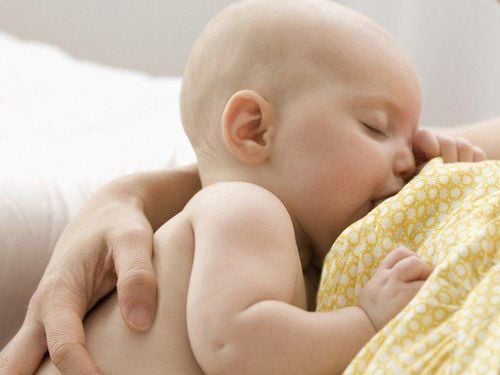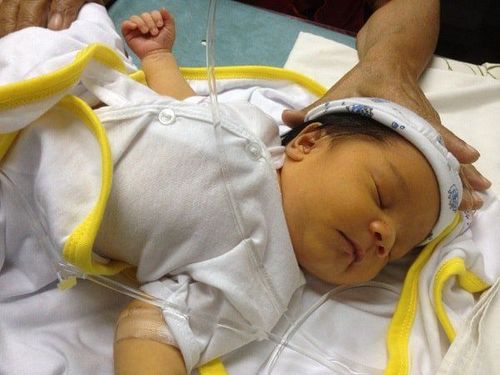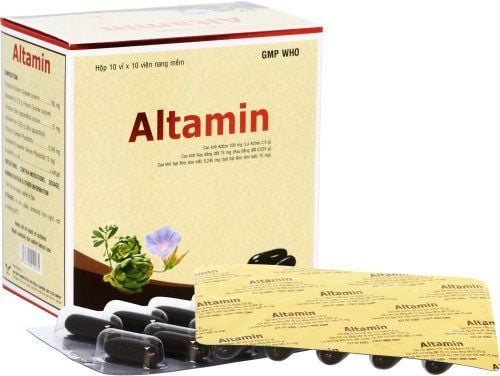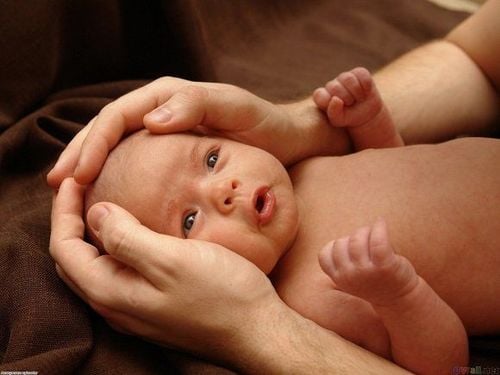This is an automatically translated article.
The article was professionally consulted by Specialist Doctor I Dang Thi Ngoc Chuong - Department of Pediatrics - Neonatology, Vinmec Central Park International General Hospital.Neonatal jaundice is an abnormally high level of bilirubin in the blood that causes yellowing of the conjunctiva of the eyes and skin. More than 60% of full-term infants have jaundice due to increased bilirubin, this rate is also higher in premature babies. So what methods are there to treat jaundice caused by indirect hyperbilirubinemia in newborns?
1. Early signs of neonatal jaundice in babies
Neonatal jaundice in babies can be detected early through the following signs:Observe the baby in sunlight and see that the baby's skin is yellow from the head to the feet. Test for jaundice by pressing on any area of the skin with your finger and holding it for about 5 seconds, then let go to see if the area is yellow. To assess the degree of jaundice in children, it is usually based on the following methods:
Visually (via kramer's law) Measure bilirubin through the skin Quantify bilirubin in serum.
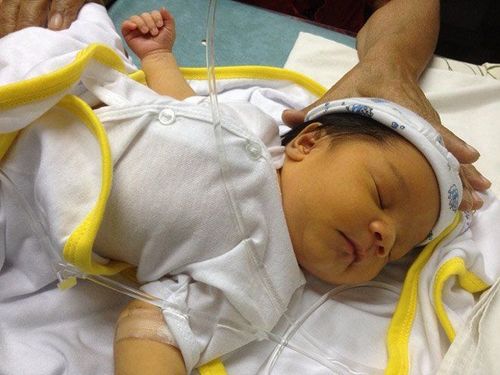
2. Distinguishing neonatal jaundice is physiological or pathological
Features of physiologic jaundice:Neonatal jaundice appears on the 2nd day after birth and gradually decreases when the baby is 1 week old (for full-term babies) and 2 weeks (for premature babies) . If the measurement of bilirubin is less than 12 mg/dl (for full-term infants) and less than 15 mg/dl (for premature babies). Direct bilirubin measurement with a bilirubin index of less than 2 mg/dl. Children are still healthy. Features of pathological jaundice:
Neonatal jaundice appears on the first day of birth. Measurement of bilirubin concentration showed a rapid increase, greater than 0.2mg/dl/hour. The baby sucks poorly, is lethargic, has rapid breathing or stops breathing, and has a change in body temperature. Liver, spleen enlargement or anemia.
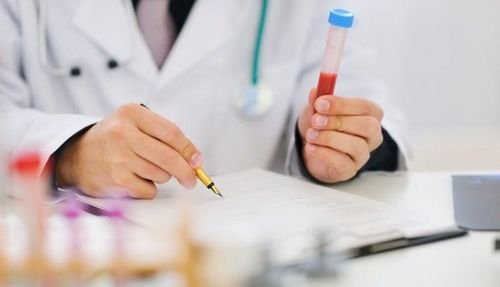
If neonatal jaundice in the baby appears early (within the first 2 days after birth): due to incompatibility of mother and child blood group ABO system (mother has blood group O). , the child has blood type A or B); Rh blood group incompatibility (mother Rh (-), child Rh (+)); immune hemolysis. If neonatal jaundice appears 3 - 10 days after birth: it may be due to an infection of the umbilicus, skin, blood; have polycythemia vera, large serum tumor, hematoma; intestinal atrophy, slow digestion of meconium; or G6PD deficiency. If neonatal jaundice appears late (about 2 weeks at birth): it may be due to breast milk, or the baby has cholestasis, liver disease, congenital hypothyroidism or other metabolic diseases. Signs that the baby has severe pathological jaundice is that the baby has jaundice on the first day after birth; By day 2, the child had jaundice to the forearms and legs and from day 3, the jaundice had spread to the hands and feet, possibly with neurological signs.
Children with jaundice due to excessive hyperbilirubinemia can lead to nuclear jaundice, which is a bilirubin encephalopathy. Some factors are considered favorable to increase the risk of nuclear jaundice such as: asphyxiation, lack of oxygen in children; premature babies, infections; hypothermia, hypoglycemia, hypoalbuminemia; acidosis.
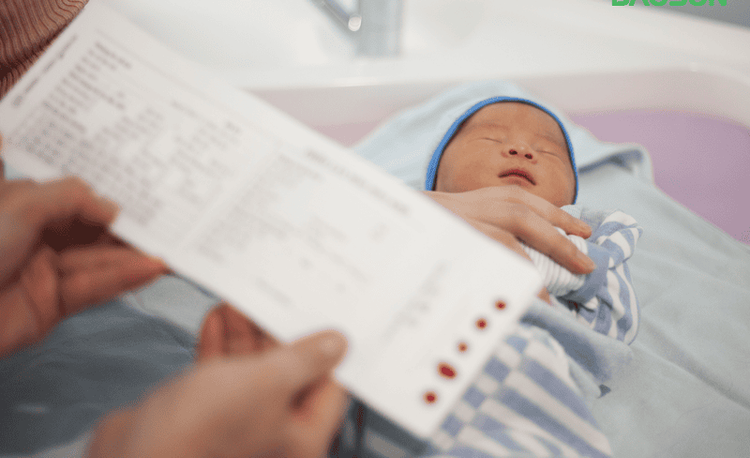
3. Treatments for jaundice caused by indirect hyperbilirubinemia in neonates
There are 2 main methods applied to treat jaundice caused by indirect hyperbilirubinemia in neonates, namely phototherapy and blood exchange.3.1 Method of irradiation Indications for treatment of jaundice caused by indirect hyperbilirubinemia in neonates under 14 days of age are based on clinical manifestations and the degree of jaundice in relation to the child's weight. Phototherapy is not used for children with jaundice due to increased direct bilirubin.
Types of lamps used include:
Fluorescent white or blue light: 6 - 8 bulbs/group, using about 2,000 hours, illuminance is 12 - 24 um/cm2/mm; projection distance is from 30-40 cm. LED blue light: 25 - 50 uw. Biliblanket lamp: intensity 7 - 35 uw/cm2/nm, lower efficiency. Blue light halogen lamp: wavelength 425 - 475nm, intensity 6 - 30 uw/cm2/nm; use time 100 - 500 hours. Distance <50cm can cause burns or increase dehydration, reduce contact area, Compact light. Indications for irradiation in the treatment of jaundice due to indirect increased bilirubin according to weight based on specific clinical are as follows:
Children <1.5 kg: prophylactic irradiation. Children from 1.5kg - 2kg: light when jaundice spreads to the head, face and chest. Children from 2kg - 2.5kg: light when jaundice spreads to the chest, abdomen and thighs. Children > 2.5 kg: phototherapy when jaundice has spread to arms, thighs and legs. In case the child has jaundice on both hands and feet, it is necessary to combine light therapy and blood exchange.
The technique of irradiation to treat neonatal jaundice is performed as follows:
The child is stripped naked and his eyes are covered. Place the child in the center of the light. Adjust the distance from the lamp to the child between 30-40cm. Lighting 24/24h, stop lighting only when the child has indications to breastfeed or perform other procedures. Turn the baby about every 2 hours.
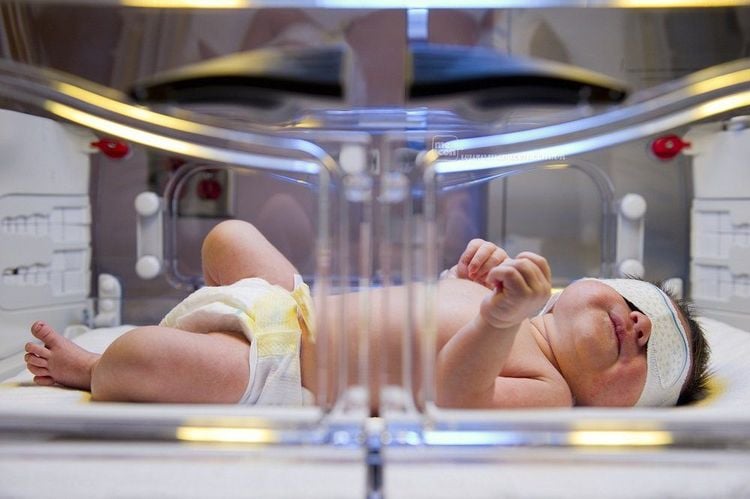
Standard lighting system: 6-20% reduction in 24 hours. Blue light and fiberoptic: 32% reduction in 18 hours. Blue light top and bottom: 43% reduction in 24 hours. Some notes when performing phototherapy in the treatment of neonatal jaundice in children:
Cover the child's eyes when illuminating the light. Monitor the child's temperature. Changing the position of the child Increasing the child's daily water requirement by 15-20% The phototherapy method can cause some side effects such as: increased dehydration, increased or decreased body temperature, skin rash, cover the child's signs of cyanosis, the child has a blocked nose due to an eye patch, damage to the retina if the child is not covered, and the skin is bronze.
3.2 Method of blood exchange Indications for treatment of blood exchange to investigate jaundice due to indirect hyperbilirubinemia in newborns are as follows:
Carry out a whole blood exchange due to indirect hyperbilirubinemia with symptoms of nuclear jaundice or increased to the limit requiring blood exchange. Perform partial blood exchange: polycythemia vera with clinical symptoms. The method of blood exchange is not applied to children who are in shock or are suffering from severe respiratory failure, only change blood when the shock and respiratory failure of the child has stabilized.
Blood exchange technique to treat neonatal jaundice is performed as follows:
The child's family commits the procedure. Insert a nasogastric tube to drain the child. Establish an intravenous line. Place the child on a flat surface and immobilize the limbs. Use a sedative when the child is excited. Disinfect the navel and surrounding skin. Ensure vitals during blood exchange.

Step 1: Draw the child's blood for testing before the blood exchange. Step 2: Inject the blood from the syringe into the blood bag. Step 3: Draw blood from the blood bag into the syringe an amount equal to the amount drawn. Step 4: Pump blood from the syringe into the child. Some notes when performing a blood exchange in the treatment of neonatal jaundice in children:
Time to perform the process of withdrawing - pumping is about 1 minute. The amount of blood pumped in and out must be equal. Shake the blood bag well. Before the end of the blood exchange process, it is necessary to draw blood for testing. End the blood exchange process by pumping blood into the baby, then withdraw the umbilical vein catheter, tie only the umbilical foot, and bandage the baby. Inject calcium gluconate 10% intravenously at a dose of 1ml/125ml of blood replacement. Treatment of indirect hyperbilirubinemia in neonates with exchange transfusions can cause a number of complications that need to be prevented and monitored, including: infection, wrong blood type, necrotizing enterocolitis, haematuria. mass, anemia, pulmonary edema, electrolyte disturbances, increased jaundice after exchange transfusion.

In summary, two methods of treating jaundice caused by indirect hyperbilirubinemia in neonates are phototherapy and exchange transfusion. However, the irradiation method is often preferred due to the simple technique, high efficiency, non-invasiveness and safety in implementation.
As a key area of Vinmec Health system, Pediatrics Department always brings satisfaction to customers and is highly appreciated by industry experts with:
Gathering a team of top doctors and nurses in Pediatrics : consists of leading experts with high professional qualifications (professors, associate professors, doctorates, masters), experienced, worked at major hospitals such as Bach Mai, 108.. Doctors All doctors are well-trained, professional, conscientious, knowledgeable about young psychology. In addition to domestic pediatric specialists, the Department of Pediatrics also has the participation of foreign experts (Japan, Singapore, Australia, USA) who are always pioneers in applying the latest and most effective treatment regimens. . Comprehensive services: In the field of Pediatrics, Vinmec provides a series of continuous medical examination and treatment services from Newborn to Pediatric and Vaccine,... according to international standards to help parents take care of their baby's health from birth to childhood. from birth to adulthood Specialized techniques: Vinmec has successfully deployed many specialized techniques to make the treatment of difficult diseases in Pediatrics more effective: neurosurgery - skull surgery, stem cell transplantation. blood in cancer treatment. Professional care: In addition to understanding children's psychology, Vinmec also pays special attention to the children's play space, helping them to have fun and get used to the hospital's environment, cooperate in treatment, improve the efficiency of medical treatment. Specialist I Dang Thi Ngoc Chuong has worked at Children's Hospital I, Thu Duc Hospital and University Hospital of Medicine and Pharmacy in Ho Chi Minh City. With strengths in neonatal diagnosis and examination - neonatal resuscitation, Dr. Chuong is currently a pediatrician at Vinmec Central Park International General Hospital and a member of the Ho Chi Minh City Pediatric Association. Bright.
SEE ALSO:
How long does it take to treat neonatal jaundice with light? Distinguishing physiological neonatal jaundice and pathological jaundice Pay attention to correct neonatal jaundice
Please dial HOTLINE for more information or register for an appointment HERE. Download MyVinmec app to make appointments faster and to manage your bookings easily.





